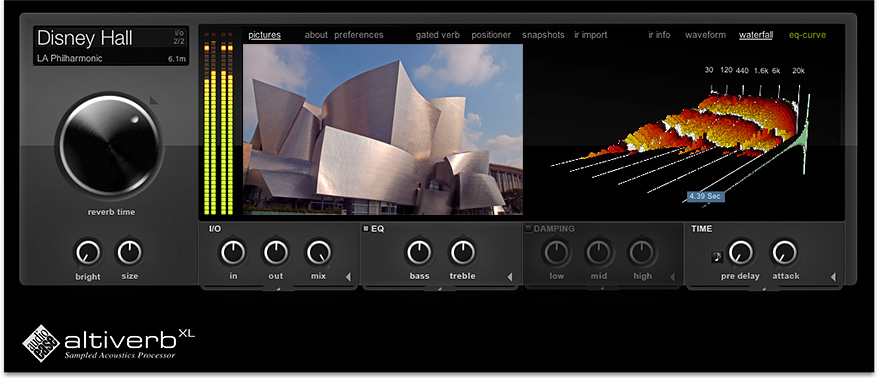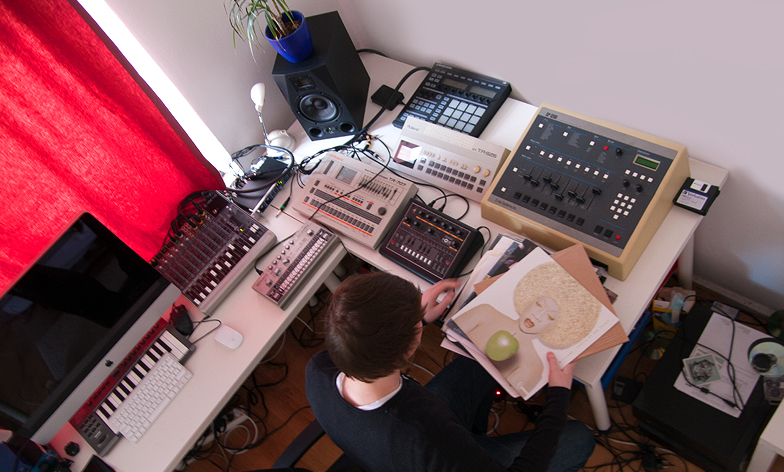Let’s face it: There really are no rules when it comes to making music. It’s very easy these days for modern music makers to get caught up in the technical expectations of what they perceive as the “correct” way to do things, but following those guidelines can really compromise originality and the creative process in general. Additionally, for those who went to audio engineering school, it can be an extreme challenge to suddenly ignore all the fundamentals.
Music production is all about practice and application, more so than following theory verbatim. As such, whether or not you’re doing it right ultimately boils down to one golden question: Does it sound good? In this article we round up some of the less-talked-about yet highly effective tips that we've picked up over the years to share with you.
1. Mix with your eyes closed
This may sound counter-productive at first, but think about it for a minute: You spend all day staring at waveforms. Music is about feeling and emotion. Instead of focusing on what dB your levels are hitting, try going with what feels right to you instead. You may find your mix sounds a lot better than it would have if you were too busy concerning yourself with your meters. When doing this, remember to trust your ears. For example, getting a vocal to sit right in the mix can be as simple as closing your eyes, turning your monitor volume down really low, and then adjusting the vocal fader accordingly. Your ears will let you know when your vocal is sitting at the right place, not your eyes.
2. Embrace imperfection
Human beings aren't perfect, and as such, the music we make shouldn't be either (unless you are a robot like Daft Punk). Try adding some subtle noise, pops, or crackles into your track. A vocal can even sound a little more authentic if it is not 100% crystal clear-sounding. Sometimes low-quality distortion and noise can add an extra human element to your music. Similarly, don’t be fooled into thinking that the highest-resolution music will always sound the best. “Stairway to Heaven” was originally recorded in mono, and is still largely regarded as one of the greatest songs of all time.
3. Try some reverb on your master output
Reverb, or any dynamic processor for that matter, can be used in very out-of-the-ordinary ways to achieve some amazing results. As an example, one trick we like to employ is to use Logic’s SpaceDesigner on our master channel. Most people would call this an extremely strange thing to do. However, SpaceDesigner is not only designed to be a reverb. In this case, we can use SpaceDesigner to act as an analog-console-emulator impulse response, which provides a little extra gain without distorting the entire channel. As such, the wet/dry effectively acts as a gain control while still maintaining overall balances and we end up with an added subtle warmth to our mix.
4. Context is meaningless
One of the most creatively inspiring things you can do is to use a plugin completely out of the context for which it was designed. Throw a guitar amp on your vocals. Use a vocal compressor on your drums. The possibilities are endless. Just because a plugin is designed for one particular purpose doesn't mean it can’t have hundreds of other applications to make your music better. One of the go-to examples that we use a lot is to throw the Waves CLA Vocals on a basic Piano sound. Although the plugin is clearly designed to treat vocals, it adds a huge amount of warmth and realness to a piano.
5. Maximize your automation
Most of the sessions we look at don’t automate anymore than two parameters: channel gain and filter cut-off. Your DAW has the ability to automate absolutely every parameter you could possibly imagine and you should use that to your advantage. Even slight automation can sometimes create a drastic effect. Try automating everything from wet/dry send signals to LFOs to oscillators to the Q parameter on your equalizer. You can even use automation to bypass plugins entirely during certain portions of a track. If you want a little more impact on your drop, try automating your master gain to -2 dB during the breakdown, then bring it back to unity just before the drop, this will create a bigger impact once your track comes back in full swing.
6. Make your kick drums monstrous
A great dance music record can be made or broken by a good kick drum. It seems almost every day producers are pushing the limits of what is considered to be a “huge” kick drum. The trick to achieve these kicks is to go beyond simply layering two or even three kicks. Instead, try layering a sine wave sub-bass layer underneath your kick drum to create maximum impact in the low end. You should proceed with caution, however, as you may find yourself getting into some nasty phasing issues (to avoid them, you may need to invert the phase 180 degrees on the sine wave). You’ll also want to make sure the sub-bass is in key with your song, as it will most likely have a fundamental root note.
7. Side-chain creatively
Side-chaining is synonymous with dance music. Naturally, its most common use is to duck elements out of the way of the kick drum, but it doesn't need to stop there. Another trick you can try is to side-chain your reverbs and delay effects by using your melody or chord progression as the trigger instead of the kick. Why not use an arpeggio to trigger the side-chain of a pad? We recently even discovered that Dutch heavy-hitter Laidback Luke uses a side-chain on his master to boost the kick drum. The possibilities are really endless.
8. Make use of the trash bin
One of the most important things for a producer, aside from actually completing tracks, is knowing when to toss them out. Sometimes ideas just aren't working out and it’s time to start with a fresh mind. This is dangerous, however, because on the other end of the spectrum it’s extremely difficult to get caught up in the cycle of scrapping everything you work on. The best way to get past this is to take breaks every few hours and listen with fresh ears to determine if what you've worked on is worth continuing. If it isn’t, you don’t even need to delete the session entirely; just throw it on a hard drive somewhere and come back to it at a later time.
9. Sell most of your gear
You probably have too much equipment. We don’t even know what you own, but chances are it is still too much. Invest the time in learning one or two synths inside out and stick to a handful of dynamic processors. You really don’t need more than that to produce a great record. Having a wall full of analog hardware in your studio might feel great, but it most likely isn't doing anything to improve your music.
10. Listen to Superman
Drop the Vengeance sample libraries for a while and go find some new sample sources. Liam Howlett of The Prodigy suggests Superman albums: “You know, big theme tunes from films. You get a horn section playing a chord and just sample a short section of that. If I hear a chord I like, I sample it.” Electronic music was built on the foundation of sampling but these days it’s easy to get caught up in the masses of dance music sample packs that all sound very similar. Better yet, try walking around with with a field recorder for a day and sample everything you hear, from conversations to sound effects. Then use those in your productions. The feeling of knowing that nobody will ever be able to use the same sample (unless, of course, they sample it from you) is a nice additional bonus.
Source :::::::::: Beatport






No comments:
Post a Comment